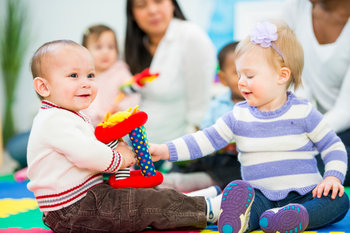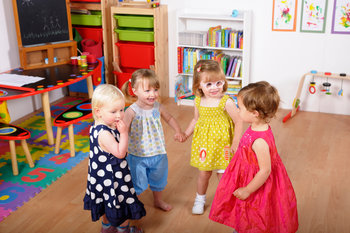What my two-year-old has taught me about language learning – Part 2

What my two-year-old has taught me about language learning – Part 1
What my two-year-old has taught me about language learning – Part 3
What my two-year-old has taught me about language learning – Part 4
What my two-year-old has taught me about language learning – Part 5
Learning a language is a complex process and the ease with which nearly every child becomes a native speaker in their language has perplexed many for generations. The child learns to discriminate between the individual sounds of his/her language, identify word boundaries, attach meaning to lexis and acquire the complex grammatical structures, all of which is considered difficult for the second language learner, but yet seemingly effortless to the child.
Although there are significant differences between first language acquisition (FLA) and second language acquisition (SLA), I have found through observing my two-year-old daughter’s language development important lessons even for the EFL teacher. In my last blogpost, I looked at the blurry distinction between lexis and grammar, the importance of imitation without fear, and the power of inductive learning and pattern-deduction.
But my toddler has also reminded me about certain language learning basics that we as EFL teachers must not forget.
Here are two more things my two-year-old has taught me about language learning:

7. The ability to empathise and to put oneself in another’s shoes can help language learning.
My daughter knows that the word ‘dog’ is the name given to that cute four-legged creature because of the pictures she keeps seeing being associated with the word, and she knows that ‘car’ is the huge thing we point out to her on the road, and ‘book’ is the thing she reads everyday.
It might be less difficult to understand how she associates meaning with the word forms and maps syllables to their related objects when the objects are concrete. But how does she figure out the meanings of more abstract words?
At 22 months, my daughter was able to understand and use the words ‘Oh dear!’, ‘Pain!’, ‘gently’, ‘already’, and ‘wait’ in the right contexts. She can empathise with characters in storybooks when asked to imitate their ‘sad face’ and she can put on a ‘happy face’ on demand.
How is she able to connect these less directly observable, abstract concepts to their lexical labels? Clearly, an ability to understand other people’s emotions and actions is required in order to be able to attribute thoughts and intentions and as a result, meaning, to this more abstract level of communication.
It is believed that this ability to put oneself in another’s position and to read their intentions, known as the Theory of Mind, is exclusive to humans and opens up the communicative facet of language. Tomasello (2003) suggests that development of the theory of mind begins at 9-12 months of age.
Mind-reading allows children the skills to comprehend functional roles in linguistic expression, and provides a communicative purpose for the acquisition of language. On a smaller scale, the ability to interpret the speaker’s intentions using non-linguistic cues (gaze, body position, etc.) also attracts the child’s attention and helps narrow down the choices of referents in the physical environment, providing the constraints needed to statistically interpret the linguistic data given (Yu et al, 2005).

With second-language learners, the availability of translation as a device for understanding abstract words could remove any need for intention-reading. Furthermore, one could argue that the theory of mind is already developed and established in the adult language learner and therefore automatically at work when learning a second language.
However, we know that some people are just better at empathising with others and putting themselves in someone else’s shoes than others. And some are more willing to do so than others.
The learner who is sensitive to embodied intentions and willing to exercise empathy is a person who is good at:
1. dealing with ambiguity of meaning during outside-classroom communication;
2. guessing and interpreting the meanings of words and phrases they’ve not heard before;
3. noticing when miscommunication or a misunderstanding has occurred;
4. cross-cultural communication
Are we therefore able to encourage the honing of such intention-reading skills in the language classroom?
Perhaps the use of critical incidents and case studies to raise awareness of cross-cultural situations, or openly discussing and debating the different views people have on more controversial topics could improve one’s ability to empathise and as result become better communicators.

8. Speech and language is not the end game. Language ability promotes social development, and social collaboration and guidance in turn develops language ability.
My daughter isn’t learning to speak for the sake of learning to speak. She is learning to speak so as to communicate her wants, her needs, her desires, her intentions and her thoughts. And sometimes, she’s not able to say what she wants, and she gets increasingly frustrated and winds up in a full-blown tantrum.
The ability to speak and communicate allows her to participate in social activities, with her parents at home and her friends and carers at nursery. This socialisation helps her to develop cognitively and linguistically, acquiring new words, developing her pattern-finding skills, improving her ability to read the intentions of others, learning to play, to share, to interact and to collaborate with others. The development of these abilities supports her language learning process which in turn feeds the development.

Vygotsky (1978) stated that learning plays a big role in development and put forward the principles of the Zone of Proximal Development (ZPD). Approaching development as a dynamic process that is mutually dependent on language learning, ZPD refers to the potential developmental level a child is able to achieve with guidance (from an adult) or collaboration (with other children).
Vygotsky (ibid) proposes that teaching should provide the scaffolding that allows the learner to learn ahead of his/her actual cognitive developmental level, and that such organised learning can speed up cognitive development through interaction and socialisation, which in turn facilitates language acquisition.
The importance of learning through socialisation and interaction with appropriate guidance in the form of scaffolding is not foreign to the communicative language learning approach to second language learning.
However, watching my daughter learn through communicating in her social environments has reinforced the belief that our presence in the language classroom should be that of guide and facilitator, and not of lecturer.
We should relinquish a bit of control and allow the interaction, the socialisation and the collaboration to take over, because that is what propels the need to communicate and the need to be understood.
That is what promotes language learning.

Bibliography
Tomasello, M. (2003) Constructing a Language: a usage-based theory of language acquisition. Harvard, Mass: Harvard University Press.
Vygotsky, L. (1978) Mind in Society: The Development of Higher Psychological Processes. M. Cole, V. John-Steiner, S. Scribner, and E. Souberman (eds.) Cambridge, MA: Harvard University Press.
Yu, C., D. Ballard, and R. Aslin. (2005) ‘The Role of Embodied Intention in Early Lexical Acquisition’. Cognitive Science 29: pp.961-1005.
Chia Suan Chong is a General English and Business English teacher and teacher trainer, with a degree in Communication Studies (Broadcast and Electronic Media) and an MA in Applied Linguistics and English Language Teaching from King’s College London.
Fascinated by the interplay between culture, language and thought, Chia is also an intercultural skills trainer and materials developer, and is now based in York.
She is also the voice of @ETprofessional on Twitter. You can find out more about her on her blogsite www.chiasuanchong.com


Comments
Write a Comment
Comment Submitted